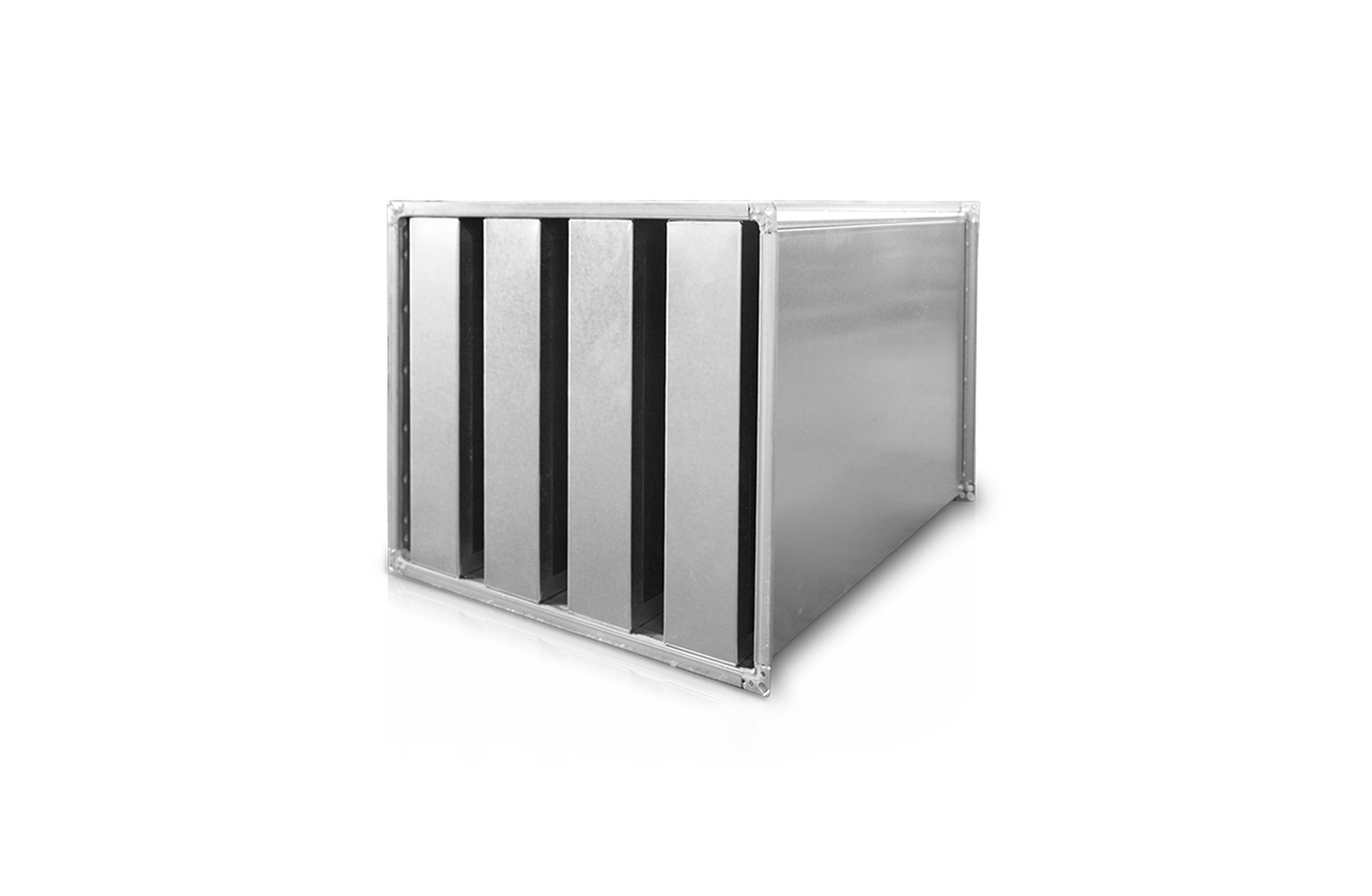
Duct Sound Attenuator
A duct sound attenuator, also known as a duct silencer or noise attenuator, is a device used in HVAC (Heating, Ventilation, and Air Conditioning) systems to reduce the transmission of noise through ductwork. It is designed to mitigate the impact of fan noise, airflow, and other sources of sound within the duct system. Here are key points related to duct sound attenuators:
- Purpose:
- Noise Reduction: The primary purpose of a duct sound attenuator is to reduce the noise generated by airflow, fans, and other sources within a ductwork system.
- Components:
- Absorptive Material: Sound attenuators often contain sound-absorbing materials, such as fiberglass or mineral wool, that help dampen sound waves.
- Baffles or Baffled Tubes: These are internal components designed to disrupt and absorb sound waves as air passes through.
- Types of Duct Sound Attenuators:
- Circular Attenuators: Designed for use in round ducts.
- Rectangular Attenuators: Configured for rectangular or square ducts.
- Bend Attenuators: Include bends or elbows, providing both sound attenuation and a change in duct direction.
- Splitter Attenuators: Use internal splitters to redirect and absorb sound.
- Insertion Loss:
- Measured in Decibels (dB): The attenuation capability of a sound attenuator is often quantified in terms of insertion loss, which represents the reduction in sound intensity achieved by the attenuator.
- Application Areas:
- Commercial Buildings: Used in offices, shopping malls, and other commercial spaces to maintain a comfortable and quiet environment.
- Industrial Facilities: Applied in factories and industrial settings to reduce the noise generated by HVAC systems and ventilation.
- Residential Buildings: Used in residential HVAC systems to minimize the impact of airflow noise.
- Selection Criteria:
- Airflow Rate: The attenuator must be selected based on the airflow rate of the HVAC system to ensure effective noise reduction without impeding airflow.
- Duct Size: The dimensions of the ductwork influence the type and size of the attenuator required.
- Noise Frequency: Different attenuators may be more effective at reducing noise at specific frequencies.
- Placement:
- Sound attenuators are typically installed within the ductwork system at strategic points, such as near fans, bends, or in areas where noise transmission is a concern.
- Regulatory Compliance:
- Compliance with local building codes and standards is essential to ensure that the installation meets regulatory requirements.
- Maintenance:
- Regular inspection and maintenance are important to ensure that the sound attenuator continues to function effectively over time.
Duct sound attenuators are valuable components in HVAC systems, contributing to a more comfortable and quiet indoor environment. Proper selection, installation, and maintenance are crucial to achieving the desired noise reduction while maintaining the efficiency of the overall HVAC system.